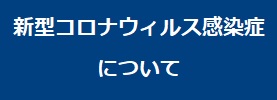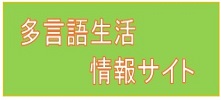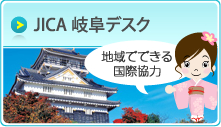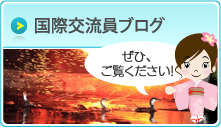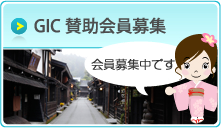 |
(2024.03.25) |
This post is available in French and English. Ce poste est publié en français et anglais. Version française au fin de page.
...
Shinkansen, the famous Japanese bullet trains
One of the most famous things about Japan abroad is their bullet trains, called "Shinkansen" in Japanese. For this post I will tell you about the different Shinkansen routes in Japan in celebration of the new section of line that opened this month, on March 16th, right here in the Chubu region up in Ishikawa and Fukui Prefectures.
Firstly, let's briefly discuss the history of the Shinkansen. The first rail lines in Japan opened in 1872 and were steam-powered; initial discussions about a high-speed rail network began in the late 1930s, although serious developments didn't occur until well into the post-war period. In 1949 the JNR (Japanese National Railways) was established as a government body to operate Japan's railways as they were nationalised. It was under the JNR that the Tokaido, Sanyo, Tohoku and Joetsu Shinkansen lines were opened. It became defunct in 1987 with the privatisation of the Japanese rail network. JNR became the JR Group (Japan Railways Group), and there are also smaller rail companies operating throughout Japan in different cities, for example Meitetsu here in Gifu.
All Shinkansen lines are operated by the main rail company group, JR, but depending on the area, different companies within the JR group operate different lines. The different branches are JR East, JR Central, JR West, JR Kyushu and JR Hokkaido. Each Shinkansen line and each type of train on each line has differences, for example in the number of carriages, the number of reserved and unreserved seats, whether or not there is a green car (the equivalent of a first-class carriage), etc. Until very recently (late 2023) there were food trolleys on the Tokyo-Osaka Shinkansen line, but they've now been discontinued. Tourists in Japan may choose to purchase the JR Pass, allowing them to ride many JR services for free, however not all types of Shinkansen can be ridden using the JR Pass, particularly the faster super express services, so make sure to check beforehand. Currently operational Shinkansen travel at high speeds of up to 320 km/h. Shinkansen move quietly, and you hardly feel them moving; it really does feel like you're gliding along when you ride it, creating a fun experience as a passenger.
Regarding the etymology of the word "Shinkansen", in Japanese it's 新幹線, containing 3 kanji characters. The first, "新", (read as shin) means "new". The second, "幹", (read as kan) means "trunk" or "main part" and the third, "線" (read as sen) means "track" or "line", so is used in the names of many different train lines, not only Shinkansen lines. In English, we call the Shinkansen "bullet trains", and this is because of both their speed, and because of the shape of the front of the trains, which is bullet-like to make them aerodynamic. In fact, back in the 1930s, the very early days of Shinkansen planning and development, in Japanese they were also called bullet trains, "弾丸列車", read "dangan ressha".
Shinkansen lines are usually separated from conventional lines, meaning that there's no overlap between the tracks used by local or limited express trains and Shinkansen. Often Shinkansen tracks are raised above the ground, so they also do not come into contact with roads, so there is no need for level crossings, etc. In some cities, existing main stations became stops on Shinkansen routes, so there is no need for a separate station, for example the Tokaido Shinkansen, Tohoku Shinkansen and Joetsu Shinkansen all start at Tokyo Station; Kyoto and Nagoya stations are both stops on the Tokaido Shinkansen, etc. On the other hand, in other cities the Shinkansen stations were built separately from other main stations, for example in Kobe there is both a Kobe Station, and a separate Shin-Kobe station for the Shinkansen. This is also true of Osaka Station and Shin-Osaka Station, and Yokohama Station and Shin-Yokohama Station. As discussed, "shin" means new so this can be directly translated as New- [station/ place name]. That being said, other lines will usually connect the Shin- station to other parts of the city to make it convenient, for example a subway line.
What is arguably the main Shinkansen route runs from Tokyo to Osaka, and then continues all the way down to Hakata, also known as Fukuoka on the island of Kyushu, in the southwest of Japan. This is called the Tokaido-Sanyo Shinkansen, with the Tokyo station to Shin-Osaka station part of the route being the Tokaido Shinkansen, then the Shin-Osaka station to Hakata station part being the Sanyo Shinkansen. The Tokaido Shinkansen is named after the historical Edo Period (1603- 1867) Edo/Tokyo to Kyoto highway. Sanyo is the name of the coastal region in the Chugoku area of Japan which faces the Seto Inland Sea (the southern coast of the Chugoku region. The northern coast is called the Sanin coast, but there is no Shinkansen service in that sparsely populated area). The Tokaido Shinkansen was the first Shinkansen line ever to open, back in 1964, coinciding with the first Tokyo Olympics of the same year. The Sanyo Shinkansen opened between 1972 (Shin-Osaka to Okayama) and 1975 (Okayama to Hakata). While some trains run all the way from Tokyo station to Hakata station, others terminate in Shin-Osaka so passengers wanting to travel further will have to change trains.
The Tokaido Shinkansen has 3 different types, which denote the number of stops they make along the route. There's the Nozomi, the Hikari and the Kodama. The Sanyo Shinkansen also has these three types, since some trains continue on from Shin-Osaka, but there are also two additional types operating on its tracks called the Mizuho and the Sakura. Nozomi trains are super-express trains which only stop at major stations in the biggest cities, while Kodama stop at every station on the line. The Hikari is in between, as it stops at some of the smaller stations; which stops it does and doesn't make depends on the train, meaning that passengers alighting at one of the stations not served by the Nozomi don't have to ride the Kodama, which takes much longer to reach further destinations because it stops everywhere.
Where the Sanyo Shinkansen line ends in Hakata, the Kyushu Shinkansen line begins, connected to it in the same way the Tokaido and Sanyo lines are connected. The Kyushu Shinkansen runs right down to the southern city of Kagoshima. Some trains cover the entire Sanyo and Kyushu Shinkansen lines, travelling between Shin-Osaka and Kagoshima-Chuo. The Kyushu Shinkansen was a much newer addition to Shinkansen lines compared to the Tokaido and Sanyo sections, opening between 2004 and 2011. Like the Sanyo Shinkansen, the Kyushu Shinkansen has Mizuho and Sakura trains, but also has Tsubame trains.
Mizuho trains are basically the equivalent of Nozomi trains, but operate on the Sanyo-Kyushu Shinkansen as opposed to the Tokaido-Sanyo Shinkansen like the Nozomi, with overlap on the Sanyo portion. Likewise, Sakura services are the equivalent of the Hikari in the same way. Tsubame stop at all stations (a bit like Kodama), but they only operate on the Kyushu Shinkansen (between Hakata and Kagoshima-Chuo). Regarding the meaning of the names of all of the trains mentioned thus far, "Nozomi" means "wish" or "hope", "Hikari" means "light", "Kodama" means "echo", "Sakura" means (as many non-Japanese speakers may know) "cherry blossom", and "Tsubame" means "swallow" (the bird). "Mizuho" is a little more complicated to translate, but it can mean "harvest" or "fresh", or can indicate an abundance of rice crops.
While the Kyushu Shinkansen is connected to the Tokaido and Sanyo Shinkansen lines, the separate Tohoku Shinkansen was the 3rd line to open in 1982, although the line has been gradually extended at either end over the years, and the line in its current, finalised form has been operational since 2010. The line, as its name suggests, runs through the Tohoku region of Japan in northern Honshu (Japan's main island), connecting Tokyo to the northernmost prefecture in Honshu, Aomori (Shin-Aomori station). It is the longest single Shinkansen route at 674.9km. At the end of the 20th century it only connected Tokyo to Morioka in Iwate Prefecture, but extended to Hachinohe in southern Aomori Prefecture in 2002 then to Shin-Aomori in 2010. The start of the line was originally in Omiya in southern Saitama Prefecture, but this was extended to Ueno station (1982) in Tokyo then further still to Tokyo station (1991).
There are 5 train types that operate on different sections of the Tohoku Shinkansen line, 3 of which operate exclusively on the main part of the lines discussed in the above paragraph. These are the Hayabusa (meaning "falcon"), which runs from Tokyo to Shin-Aomori (and can continue onto the Hokkaido Shinkansen, to be discussed later), the Yamabiko (meaning an echo heard in the mountains) which runs between Tokyo and Morioka, and the Nasuno (name derived from the Nasu highlands and Nasu Onsen area in the Tohoku region) which runs between Tokyo and Koriyama in Fukushima Prefecture. The exterior of trains on the Tohoku Shinkansen line are particularly pretty, with the rolling stock E5 series having a design in which the top half is a teal colour and the bottom is white, with a hot pink stripe separating the sections. The H5 series has the same design but with a purple stripe instead.
The Tohoku Shinkansen has two offshoots which serve areas which otherwise do not have Shinkansen line coverage, namely the Akita Shinkansen and the Yamagata Shinkansen, which are different to the usual types as they are "mini-Shinkansen". What differentiates them are the track types used, as instead of running on specific Shinkansen tracks, they run on existing tracks used for other train networks, as this allowed the cost of building new tracks to be saved. This is why they are called mini-Shinkansen; narrow gauge railway tracks were converted to standard gauge to allow Shinkansen trains to run on them, thus providing Akita Prefecture and Yamagata Prefecture with high-speed rail services. The mini-Shinkansen are not as fast as normal Shinkansen, running at maximum speeds of 130km/h, although the snowy and mountainous terrain in both regions means they sometimes operate at slower speeds.
The Yamagata Shinkansen was the first of the two lines to open, in 1992. It runs from Tokyo Station to Shinjo in northern Yamagata Prefecture, using the same tracks as the Tohoku Shinkansen until Fukushima Station, where it then diverges. There is only one type of train on the Yamagata Shinkansen, the Tsubasa, which means "wings".
The Akita Shinkansen opened in 1997 following the success of the Yamagata Shinkansen, and runs from Tokyo Station to Akita Station. It also uses the same tracks as the Tohoku Shinkansen for part of the route, until Morioka Station in Iwate Prefecture, where it then diverges. There is also only one type of train, the Komachi, which means "old town".
As briefly mentioned, there is a Hokkaido Shinkansen which is connected to the Tohoku Shinkansen continuing on from Shin-Aomori to Shin-Hakodate-Hokuto, in the south of Hokkaido. This Shinkansen route travels under the sea, as does the section of the Sanyo Shinkansen which runs from Yamaguchi Prefecture in the far west of Honshu to Fukuoka Prefecture (uses the Shin-Kanmon Tunnel under the Kanmon Straits, opened 1975). The tunnel that connects Honshu and Hokkaido is the Seikan Tunnel under the Tsugaru Strait. 23.3km of it is under the sea, 100m below the seabed and 240km below sea level. It is the world's longest undersea tunnel by overall length, as while the Channel Tunnel connecting the south of England to northern France has a longer undersea section of 37.9km, it is shorter overall when taking into account the sections not underwater. The tunnel opened in 1988, earlier than the Hokkaido Shinkansen, which opened in 2016. As stated previously, the Hayabusa train operates on the Hokkaido Shinkansen, and which stations it stops at depends on the service in question. There are currently only 4 stops in total on the Hokkaido Shinkansen, including both terminals, with one additional stop before the Tsugaru Strait in Aomori Prefecture, and one in Hokkaido before reaching the Shin-Hakodate-Hokuto terminal.
The Joetsu Shinkansen takes its name from the Joetsu region in Niigata Prefecture. It runs to Niigata Station, from Tokyo Station, via Gunma Prefecture. It opened in 1982 and there are two types of trains on the line, the Toki, which is named after a bird called the crested ibis in English, and the Tanigawa, which means "mountain stream". The Toki does not stop at all stations, and runs all the way to Niigata Station. On the other hand, the Tanigawa stops at all stations and terminates earlier, at Echigo-Yuzawa, located in the hot spring (onsen) resort town of Yuzawa in Niigata Prefecture. However, during the winter skiing season Tanigawa trains continue one stop further to Gala Yuzawa, a popular ski resort. The first section of the Joetsu Shinkansen, from Tokyo to Omiya, uses the Tohoku Shinkansen tracks.
The Hokuriku Shinkansen was opened in 1997, just in time for the 1998 Winter Olympics, and originally ran to Nagano city only, and was also sometimes referred to as the Nagano Shinkansen. It, like many other services, begins at Tokyo Station and also uses the Tohoku Shinkansen line to Omiya, and then uses the Joetsu Shinkansen line until Takasaki Station in Gunma Prefecture. So, the first part of track used only by the Hokuriku Shinkansen line begins after Takasaki station and it was the Takasaki to Nagano part of track which opened in 1997. The Hokuriku Shinkansen line that was operational until the most recent additions this year, (to be discussed shortly) was opened in 2015 with the Nagano city to Kanazawa extension.
There are four types of trains operating on the Hokuriku Shinkansen. The Asama is named for the active volcano, Mount Asama, on the border between Gunma and Nagano, and this service only operates between Tokyo Station and Nagano Station. The other three have all been affected by the recent extension (the following information describes the services until this month). The Kagayaki, meaning "radiance" is the quickest service as it made limited stops between Tokyo and Kanazawa. The Hakutaka, meaning "white hawk", also operated between Tokyo and Kanazawa but makes more stops than the Kagayaki. Finally, the Tsurugi, meaning "sword" shuttled between Toyama and Kanazawa, stopping at every station (there is only one, Shin-Takaoka, between Toyama and Kanazawa).
The newest Shinkansen line prior to this year was the Nishi Kyushu Shinkansen, which opened in September 2022. It is located in the west part of Kyushu (nishi means west in Japanese). This line is currently the shortest Shinkansen line at only 66km in length. It runs from Nagasaki city to Takeo Onsen in Saga Prefecture currently, although there are plans to extend the line to Hakata, making an uninterrupted Shinkansen route between Hakata and Nagasaki. However, construction hasn't begun and currently there is no planned timeframe for when this line may be extended. According to the Asahi Shimbun, there are logistical issues facing the project relating to costs, as the project went over budget due to changes in the technology planned to be used, as gauge changing trains and narrower tracks were planned, but scrapped (this would've allowed the Shinkansen to travel on existing tracks), causing disagreements between related parties. Currently, when you look at a map of Shinkansen lines, it is the only one that is separate and cut off from other lines, due to the gap between Takeo Onsen and Hakata. However, there are routes of conventional trains between Takeo Onsen and Hakata currently.
There is only one type of train on the Nishi Kyushu Shinkansen line, the Kamome, meaning "gull" or "seagull". There are only 3 stops on this line not including Nagasaki and Takao Onsen. I was lucky enough to ride this line in November 2022, very shortly after it opened. The PR posters advertising the new line were sleek, and the yellow seats in the carriage were bright and fun, especially given that other Shinkansen have more muted coloured seats.
There are many Shinkansen lines across Japan, but more are on the way! One new Shinkansen line extension opened this month, and there is currently another extension of an existing line under construction, and one brand new line under construction.
The newly opened line is an extension of the pre-existing Hokuriku Shinkansen, extending the line on from Kanazawa in Ishikawa Prefecture to Tsuruga in Fukui Prefecture. It opened on March 16th, and the Kagayaki, Hakutaka and Tsurugi trains are being used on the line. Six additional stops have been added to the line, including Fukui city. Before March 2024, two conventional type limited express trains covered the area between Tsuruga and Kanazawa; the Thunderbird (old route: Osaka to Kanazawa) and the Shirasagi (old route: Nagoya to Kanazawa, via Gifu), but now both of these limited express services have been shortened to terminate at Tsuruga, where passengers can change onto the Shinkansen line. Other trains on this section of track have also been discontinued, for example the Dinostar limited express service between Kanazawa and Fukui, which I thought was worth mentioning due to its cute name, as many dinosaur fossils have been found in Fukui Prefecture (there are tourist attractions such as dinosaur statues outside Fukui Station and a dinosaur museum). There are further plans to extend the Hokuriku Shinkansen route further still from Tsuruga to Shin-Osaka, however an environmental impact assessment seems to be currently underway in Kyoto Prefecture, and construction has not begun.
The next upcoming Shinkansen line extension is on the Hokkaido Shinkansen line. The current Hokkaido Shinkansen line ends in southern Hokkaido, so while it connects Honshu to Hokkaido it doesn't provide substantial transport links between towns and cities in Hokkaido. That being said, there is a good conventional train line which connects Hakodate to the capital Sapporo, which travels along some of the southern coast of Hokkaido and via Hokkaido's main airport, New Chitose. Most of Hokkaido's train lines are in the western part of the island, and there are limited connections to the east, which is largely rural and mountainous, with national parks. The Shinkansen line extension looks to connect Shin-Hakodate-Hokuto Station with Sapporo via a different route to the existing conventional train lines, and more quickly. The route will go through Otaru, a popular tourist destination on the north-west coast of Hokkaido, famous for its industrial history and canals. The original planned opening year of the extension was 2031, however the Japan Times reported late last year that the project may be up to four years behind due to difficulties constructing tunnels due to obstruction by rocks and labour shortages. Hokkaido plans to bid for the Winter Olympic games in the future, and the Shinkansen line extension would provide useful transport links for the increased number of visitors who would come for the potential games.
A brand new upcoming Shinkansen line currently being developed is the Chuo Shinkansen, "chuo" meaning "centre" in Japanese. This line will run from Shinagawa in Tokyo to Nagoya (through central Japan), and then will later be extended to Osaka. These are the same main stops as the Tokaido Shinkansen, connecting Japan's largest major cities, however the route used to connect them will be different, with the goal of reducing the amount of time it takes to travel between them. Another aim is to ease the congestion on the Tokaido Shinkansen line, which is the busiest Shinkansen line, especially given that the number of overseas tourists coming to Japan is increasing, and in 2023 more visitors came than in 2019, pre-pandemic. The Tokaido Shinkansen is 515.4km long, whereas the planned Chuo Shinkansen will only be about 286km long. Regarding speed, the Chuo Shinkansen will use maglev technology, and this updated technology will allow it to travel much faster than the existing Shinkansen trains at a maximum of 505km/h (there is a test track in Yamanashi Prefecture). The line is expected to connect Tokyo and Nagoya in 40 minutes, and Tokyo and Osaka in 67 minutes, compared to 1hr 39 mins and 2hrs 22 mins currently.
The Tokyo-Nagoya leg of the Tokaido Shinkansen travels closer to the coast than the planned Chuo Shinkansen route, as it has stops in some of Shizuoka Prefecture's major cities (although the fastest super express Nozomi train skips these stops, going directly from Shin-Yokohama to Nagoya). On the other hand, the planned Chuo Shinkansen route will be more direct, connecting Tokyo and Nagoya as fast as possible. The route has therefore been designed to be much shorter, and will go through part of the southern area of the Japanese Alps. It will pass through the northern part of Kanagawa instead of the southern part (thereby not going via Yokohama), then Yamanashi and southern Nagano Prefecture, and then through part of Gifu Prefecture. Namely, the Tono area of Gifu before reaching Nagoya, rather than the Seino area (specifically Shin-Hashima station) that the Tokaido Shinkansen travels through after stopping at Nagoya. This will create exciting new developments in Gifu Prefecture, as the plan includes a new station in Nakatsugawa city, with the prospective name being "Gifu Prefecture Station", and the Chuo Shinkansen will stop there. This first leg of the Chuo Shinkansen line is currently under construction, and was originally projected to begin operation in 2027. However, the Mainichi Shimbun has reported issues with the construction plans that will potentially cause delays, relating to the small section of tunnels (80% of the Chuo Shinkansen route will be in tunnels) which will run through a small part of northern Shizuoka Prefecture. Namely, there are concerns over the environmental impact which will be incurred. Even though delays are likely, at Shinagawa Station inside the Shinkansen ticket gate area there is a poster advertising the upcoming Chuo Shinkansen.
The second leg of the new line, from Nagoya to Osaka will also follow a different route to the Tokaido Shinkansen line, as rather than going via Maibara in Shiga Prefecture, skirting along the south east and southern part of Lake Biwa (Japan's largest lake) and then stopping in Kyoto, the planned Chuo Shinkansen line will go through Mie Prefecture and the northern part of Nara Prefecture before stopping at Shin-Osaka, although this section of the line has yet to begin construction, and is tentatively predicted to begin services in 2037.
To conclude, I am curious to see what the future of the Shinkansen holds, and the final shape the two routes currently under construction and other planned routes will end up taking. The Chuo Shinkansen in particular, should bring exciting new developments to Gifu Prefecture. The only one of Japan's four main islands that does not have a Shinkansen line is Shikoku, although of course there are conventional lines providing transport links there. I definitely wasn't expecting to find out so much about the Shinkansen routes when I decided to write this post, and I was especially interested to learn how many Shinkansen trains are named after birds! Perhaps this is due to the elegance of birds as they glide through the air, which is similar to the way sleek Shinkansen trains glide along the tracks. There are also a lot of names related to nature, which makes sense given the many beautiful natural sites in Japan's countryside. If you are in Japan, or plan on visiting, definitely ride the Shinkansen, as not only are they a brilliant way to get around, they are also a tourist attraction in and of themselves!
(See images at the bottom of the page.)
...
...
Le Shinkansen, célèbre TGV japonais
...
Une des choses du Japon les plus célèbres à l'étranger est son train à grande vitesse, le Shinkansen. Dans ce post, je vais décrire les lignes de Shinkansen au travers du Japon, à l'occasion de l'ouverture le 16 mars d'une nouvelle branche d'une ligne reliant les préfectures d'Ishikawa et Fukui, au Nord du Chubu, dans la même région que Gifu.
...
Tout d'abord, discutons brièvement de l'histoire du Shinkansen. Le premier chemin de fer au Japon a été ouvert en 1872, avec un train à vapeur. Vers la fin des années 1930, l'idée d'un train à grande vitesse fut abordée, bien que des développements concrets n'aient commencé qu'après la guerre. En 1949, la JNR (Japanese National Railways ; les chemins de fer nationaux japonais), l'organisation publique qui gérait les chemins de fer, fut établie. Durant cette période, les chemins de fer japonais étaient nationalisés, comme ceux de la France. Les lignes de Shinkansen Tokaido, Sanyo, Tohoku et Joetsu ont commencé leurs opérations sous la direction de la JNR, mais en 1987 l'organisation fut remplacée par le groupe JR (Japan Railways Group, le groupe des chemins de fer japonais). Il existe aussi d'autres sociétés de chemin de fer au travers du Japon en dehors du groupe JR ; par exemple, ici à Gifu, on a la société Meitetsu, qui opère des trains locaux.
...
Actuellement, toutes les lignes de Shinkansen sont gérées par le groupe JR, qui possède des sous-branches opérant les trains au niveau régional. Les sous-branches gérant au moins une ligne de Shinkansen sont JR East, JR Central, JR West, JR Kyushu et JR Hokkaido. Il existe des différences entre les diverses lignes de Shinkansen et les différents trains qui opèrent sur les lignes : par exemple, le nombre de voitures, le nombre de sièges à réservation obligatoire ou non, et la présence ou non de voitures de première classe, appelées les "voitures vertes".
...
Jusqu'à la fin de 2023, des chariots de cuisine étaient inclus dans le service de la ligne entre Tokyo et Osaka, auprès desquels on pouvait acheter des encas ou un café. Ils furent cependant supprimés suite à une chute de la demande de la part des clients et à un manque de personnel. En tant que touriste, il est possible d'acheter le Japan Rail Pass pour prendre les trains de JR gratuitement ; mais ce pass ne permet pas de prendre tous les types de Shinkansen, notamment les super-express, alors il vaut mieux vérifier à l'avance. Le Shinkansen actuellement en circulation peut atteindre la vitesse maximum de 320 km/h. Le Shinkansen est presque silencieux, et en tant que voyageur, on sent à peine son mouvement, si bien qu'il semble planer.
...
Pour mieux comprendre le mot Shinkansen et son étymologie, intéressons-nous à son écriture en japonais :
新幹線 (Shinkansen)
Le premier caractère, 新 (shin), signifie "nouveau". Le deuxième, 幹 (kan), veut dire "tige" ou "partie principale". Enfin, le troisième, 線 (sen), signifie "chemin de fer" ou "ligne". On peut d'ailleurs voir ce dernier kanji dans les noms de nombreuses lignes de train, sans se limiter aux lignes de Shinkansen. Autrefois, le Shinkansen portait le nom de 弾丸列車 (dangan ressha), traduit en anglais par "bullet train" (train balle, dans le sens de balle de pistolet), au vu de la forme de la partie avant du train.
...
Les chemins de fer empruntés par le Shinkansen sont en principe séparés des autres lignes, alors il n'y a aucun chevauchement. Dans beaucoup de grandes villes, le Shinkansen s'arrête aux gares majeures, comme la gare de Tokyo, mais il y a beaucoup d'exceptions à cela. On pourra souvent voir des noms de gare utilisant le préfixe "Shin-" suivi du nom de la ville, par exemple Shin-Osaka, Shin-Yokohama et Shin-Kobe, pour faire la différence avec leurs homonymes des gares d'Osaka, de Yokohama et de Kobe, où le Shinkansen ne passe pas. Dans les gares desservant le Shinkansen, bien souvent, d'autres lignes de transport telles que le métro seront également disponibles, les rendant d'autant plus pratiques.
...
On peut dire que la principale ligne de Shinkansen du pays est la ligne Tokaido reliant Tokyo et Osaka. Cette ligne s'étend pour devenir la ligne Sanyo, reliant Osaka et Hakata (gare principale de Fukuoka) sur l'île de Kyushu, au Sud-Ouest du Japon. Le nom Tokaido date de l'époque d'Edo (1603-1867), durant laquelle une grande route du même nom reliait Edo (ancien nom de Tokyo) et Kyoto. Sanyo fait référence au sud de la région Chugoku, longeant la côte de la mer intérieure de Seto. La côte Nord, quant à elle, porte le nom de Sanin, mais il n'existe pas de ligne de Shinkansen dans cette région peu peuplée.
...
Le Shinkansen Tokaido fut le premier à être mis en place en 1964, la même année que les premiers Jeux olympiques de Tokyo. Le Shinkansen Sanyo fut mis en place de 1972 (de Shin-Osaka à Okayama) à 1975 (de Okayama à Hakata). Il existe des trains directs allant de Tokyo à Hakata, mais il faut bien souvent effectuer un changement à Shin-Osaka pour rejoindre les destinations de la ligne Sanyo. Trois types de trains circulent sur la ligne Shinkansen Tokaido : ils sont différenciés par le nombre d'arrêts qu'ils effectuent. Il y a le Nozomi ("espoir", "souhait" en japonais), le Hikari ("lumière"), et le Kodama ("écho"). En plus de ces trois types de trains, le Mizuho (difficilement traduisible, mais signifie "récolte", "frais", "riz abondant") et le Sakura (la célèbre fleur de cerisier du Japon) circulent sur la ligne Shinkansen Sanyo. Les Nozomi, trains super-express, ne s'arrêtent qu'aux gares majeures, tandis que le Kodama s'arrête à toutes les gares. Le Hikari représente leur entre-deux, avec quelques arrêts dans des gares mineures, qui diffèrent en fonction du train. Quant aux trains Mizuho, ils sont l'équivalent du Nozomi, mais pour les lignes Sanyo-Kyushu. Le Sakura est lui l'équivalent du Hikari.
...
La ligne Shinkansen Sanyo se termine à Hakata, où le Shinkansen Kyushu commence sur les mêmes rails. Le Shinkansen Kyushu traverse l'île du même nom pour s'arrêter dans la ville de Kagoshima, tout au Sud. Il est aussi possible de rejoindre Kagoshima par Shin-Osaka. En plus des trains Mizuho et Sakura, les trains Tsubame ("hirondelle") circulent également sur la ligne Shinkansen Kyushu. Le Tsubame est similaire au Kodama, dans le sens où il s'arrête à toutes les gares, mais ne dessert que les gares de la ligne Kyushu entre Hakata et Kagoshima-Chuo. Le Shinkansen Kyushu est bien plus récent comparé à ceux de Tokaido et Sanyo, ayant été mis en opération entre 2004 et 2011.
...
Durant ce poste, jusqu'ici j'ai décrit trois lignes de Shinkansen connectées ; mais avant celle de Kyushu, une autre ligne, celle du Shinkansen Tohoku, fut la troisième à ouvrir en 1982. La ligne fut continuellement rallongée, pour s'achever en 2010. Le terme de Tohoku fait référence à la région nord de l'île principale Honshu. Le Shinkansen Tohoku connecte Tokyo à la préfecture d'Aomori (gare de Shin-Aomori), préfecture la plus au nord de Honshu. C'est la ligne de Shinkansen la plus longue, à 674,9 km. Sur cette ligne, cinq types de trains circulent, dont trois qui lui sont exclusifs. Le Hayabusa ("faucon"), reliant Tokyo et Shin-Aomori (il peut continuer jusqu'au Shinkansen Hokkaido, que je vais aborder plus tard), le Yamabiko ("écho des montagnes"), voyageant entre Tokyo et Morioka dans la préfecture d'Iwate, ainsi que le Nasuno (nom venant de la région montagneuse Nasu et de Nasu-Onsen, ses sources chaudes) qui relie Tokyo et Koriyama dans la préfecture de Fukushima. Les extérieurs des trains du Shinkansen Tohoku sont particulièrement jolis, avec notamment ceux de la série E5 qui arborent une moitié supérieure bleu turquoise et un dessous blanc, les deux moitiés étant séparées par une bande rose fuschia qui traverse le train en son milieu. La série H5 arbore un design similaire, à la différence de la bande rose, remplacée par une bande violette.
...
Le Shinkansen Tohoku est relié à deux lignes, le Shinkansen Akita et le Shinkansen Yamagata, qu'on appelle des "mini-Shinkansen". Ils sont différents car ils empruntent les mêmes rails que les trains normaux, ce qui réduit le coût de développement de leurs deux lignes. Plutôt que de construire de nouveaux chemins de fer, les lignes existantes, trop étroites à l'origine, furent converties à l'écartement standard pour que le Shinkansen puisse les utiliser. Comparé au Shinkansen normal, les mini-Shinkansen ne sont pas aussi rapides, avec une vitesse maximum de 130 km/h. Le Shinkansen Yamagata a ouvert en 1992 et relie Tokyo à Shinjo au nord de la préfecture de Yamagata. Il emprunte le même chemin de fer que le Shinkansen Tohoku jusqu'à diverger à la gare de Fukushima. Le train s'appelle Tsubasa, signifiant "ailes". Le Shinkansen Akita quant à lui ouvra en 1997 suite au succès du Shinkansen Yamagata, et relie Tokyo à Akita. Il utilise le même chemin de fer que le Shinkansen Tohoku jusqu'à la gare de Morioka. Son train s'appelle le Komachi, "vieille ville" en japonais.
...
J'ai mentionné plus tôt le Shinkansen Hokkaido, ouvert en 2016, qui est connecté au Shinkansen Tohoku, où il continue de Shin-Aomori à Shin-Hakodate-Hokuto, au Sud de l'île d'Hokkaido. Cette ligne passe sous le détroit de Tsugaru par le tunnel Seikan, sous la mer pendant 23,3 km. C'est le plus long tunnel sous-marin au monde au vu de sa longueur totale ; cependant, bien qu'il soit plus court au total, le tunnel sous la Manche possède une section sous-marine plus longue avec 37,9 km. Le Shinkansen Sanyo a aussi une section sous la mer, entre Honshu et Kyushu. Il passe par le tunnel Shin-Kanmon, tenant son nom d'après le détroit de Kanmon. Comme dit plus tôt, le train Hayabusa circule sur les lignes du Shinkansen Hokkaido et du Shinkansen Tohoku. Actuellement, le Shinkansen Hokkaido n'a que trois arrêts après Shin-Aomori, y compris sa gare finale, Shin-Hakodate-Hokuto.
...
Le Shinkansen Joetsu, ouvert en 1982, tire son nom de la région Joetsu dans la préfecture de Niigata. Il relie la gare de Tokyo à la gare de Niigata. Il y a deux types de train : le Toki, qui veut dire "ibis huppé" (une espèce d'oiseau), et le Tanigawa, traduit par "ruisseau des montagnes". Le Toki ne s'arrête pas à toutes les gares, et termine à Niigata, tandis que le Tanigawa s'arrête à toutes les gares mais finit à Echigo-Yuzawa, la gare de Yuzawa, ville thermale de la préfecture de Niigata. Par ailleurs, en hiver il y a un arrêt de plus, Gala Yuzawa, une station de ski populaire. La section du Shinkansen Joetsu allant de Tokyo à Omiya dans la préfecture de Saitama utilise le même chemin de fer que le Shinkansen Tohoku.
...
Le Shinkansen Hokuriku ouvre en 1997 en prévision des Jeux olympiques d'hiver à Nagano de 1998. À l'époque, il ne va que jusqu'à la ville de Nagano, et ce depuis la gare de Tokyo. Le train utilise le chemin de fer du Shinkansen Tohoku jusqu'à Omiya, puis le chemin de fer du Shinkansen Joetsu jusqu'à Takasaki dans la préfecture de Gunma. Le projet du Shinkansen Hokuriku visait à relier Takasaki à la gare de Nagano. Une extension du Shinkansen Hokuriku entre Nagano et Kanazawa a ouvert en 2015. Il y a quatre types de train : le premier, l'Asama, qui tient son nom du volcan actif à la frontière entre les préfectures de Gunma et Nagano, ne circule qu'entre la gare de Tokyo et la gare de Nagano. Les trois autres types de train ont été modifiés par l'extension du Shinkansen Hokuriku qui a ouvert ce mois-ci ; je vais les aborder un peu plus loin dans cet article.
...
Avant cette année, la section de Shinkansen la plus récente était la nouvelle ligne Nishi Kyushu, ouverte en septembre 2022. Nishi veut dire Ouest en japonais, le Shinkansen Nishi Kyushu étant à l'ouest de Kyushu. C'est la ligne de Shinkansen la plus courte, 66 km de longueur. Il circule actuellement de la ville de Nagasaki à Takeo Onsen dans la préfecture de Saga. Un projet de prolongement de la ligne jusqu'à Hakata est en discussion, mais la construction n'a pas encore commencé et il n'existe aucune date limite de fin de l'extension. Selon le journal Asahi Shimbun, des problèmes logistiques sont apparus concernant ce projet en conséquence d'un changement de la technologie utilisée, dépassant ainsi le budget. Le plan était d'utiliser les chemins de fer actuels avec des trains capables de circuler sur différents écartements, mais ce plan a été abandonné, causant des désaccords entre les partis concernés. Si on regarde une carte des lignes de Shinkansen, on verra le Shinkansen Nishi Kyushu comme la seule ligne coupée de tous les autres, avec un trou entre Takeo Onsen et Hakata, bien qu'il existe d'autres lignes de train entre les deux. Le train sur la ligne Shinkansen Nishi Kyushu s'appelle le Kamome, qui veut dire "mouette". Il n'y a que quatre arrêts sur cette ligne après Nagasaki, incluant l'arrêt final, Takeo Onsen. J'ai pris ce Shinkansen en novembre 2022, peu après son ouverture, et j'ai bien aimé les affiches de publicité impactantes et les sièges à l'intérieur, jaunes, plus brillants que les sièges des autres trains de Shinkansen que j'ai pris.
...
Il est clair qu'il y a beaucoup de lignes de Shinkansen à travers le Japon, et ce n'est pas fini! Une extension a ouvert ce mois-ci, et une autre extension ainsi qu'une ligne toute neuve sont actuellement en construction.
...
L'extension qui a ouvert le 16 mars est celle du Shinkansen Hokuriku, de Kanazawa dans la préfecture d'Ishikawa à Tsuruga dans la préfecture de Fukui. Il y a six nouveaux arrêts, y compris la ville de Fukui. Les anciens services, hors Shinkansen, qui circulaient entre Kanazawa et Tsuruga ont été annulés ou raccourcis afin de terminer à Tsuruga, d'où on doit effectuer un changement pour le Shinkansen. Un projet de prolongement de la ligne du Shinkansen Hokuriku vers Osaka est en discussion, mais la construction n'a pas encore commencé au vu d'une évaluation préalable de l'impact environnemental à Kyoto. Les trois types de train du Shinkansen Hokuriku (ainsi que le Asama mentionné précédemment) sont le Kagayaki ("rayonnement"), le Hakutaka ("faucon blanc") et le Tsurugi ("épée"). Le Kagayaki est le plus rapide avec des arrêts limités entre Tokyo et Kanazawa, tandis que le Hakutaka a plus d'arrêts entre les deux. Le Tsurugi circule entre Toyama et Tsuruga (entre Toyama et Kanazawa jusqu'à ce mois-ci) et s'arrête à toutes les gares.
...
D'autre part, une extension du Shinkansen Hokkaido est également en construction. Actuellement, cette ligne se termine au sud d'Hokkaido, ne permettant pas la liaison entre les villes de l'île. Des services de trains normaux relient Hakodate et Sapporo, la capitale d'Hokkaido, qui traversent la côte du sud et passent par le plus grand aéroport de l'île. Un système de transports existe à l'ouest d'Hokkaido, mais il est assez disparate, la zone étant relativement rurale. L'extension de la ligne Shinkansen Hokkaido va connecter Shin-Hakodate-Hokuto et Sapporo en utilisant un trajet différent des chemins de fer actuels, et plus rapidement. Le Shinkansen passera par Otaru, une destination touristique populaire. L'ouverture était prévue pour 2031, mais selon le Japan Times, il est probable que le projet prenne jusqu'à 4 années de retard au vu de difficultés de construction des tunnels et d'un manque de main-d'œuvre.
...
La toute dernière version du Shinkansen s'appelle le Shinkansen Chuo, "centre" en japonais. Le Shinkansen Chuo utilisera la nouvelle technologie maglev, et par conséquent circulera beaucoup plus vite que le Shinkansen actuel, à 505 km/h. Le Shinkansen Chuo reliera Tokyo (la gare de Shinagawa) à Nagoya, et plus tard à Osaka. Comme vous l'aurez peut-être remarqué, ce sont les mêmes arrêts que le Shinkansen Tokaido, passant par les grandes villes majeures du Japon. Dans les faits, le trajet de la nouvelle ligne différera du Tokaido ; le but du Shinkansen Chuo est de diminuer le temps de voyage entre ces grandes villes et de réduire le nombre des usagers du Tokaido, toujours surchargé, notamment avec l'augmentation des touristes dans le pays. Le Shinkansen Tokaido fait 515,4 km de longueur, mais le Shinkansen Chuo fera environ 286 km de longueur. Cette ligne devrait permettre de réduire le trajet entre Tokyo et Nagoya à 40 minutes (actuellement 1h39), et Tokyo et Osaka à 67 minutes (actuellement 2h22).
Concernant le trajet, il sera plus direct et traversera la préfecture de Yamanashi, le sud de la préfecture de Nagano, ainsi que la préfecture de Gifu. Le Shinkansen Tokaido traverse déjà l'est de Gifu, par un arrêt dans la ville de Hashima. La nouvelle gare sera à l'ouest, à Nakatsugawa, avec le nom potentiel de "Préfecture de Gifu". Cela amènera de nouveaux développements à Gifu. Comparons la nouvelle ligne au trajet du Shinkansen Tokaido ; le Tokaido circule le long de la côte par les préfectures de Kanagawa, Shizuoka et Aichi (avec des arrêts à Shizuoka, bien que le super-express Nozomi ne s'y arrête pas), mais le Shinkansen Chuo ne passera pas par la grande ville de Yokohama. Cette première étape entre Tokyo et Nagoya est actuellement en construction, avec une ouverture de service prévue pour 2027. Cependant, selon le journal Mainichi Shimbun, des problèmes concernant la construction des tunnels nécessaires et leur impact environnemental sont apparus, et un retard semble inévitable. Malgré ce retard, la gare de Shinagawa arbore une affiche faisant la publicité du Shinkansen Chuo.
Le trajet de la deuxième étape, entre Nagoya et Osaka, différera aussi du Shinkansen Tokaido. Le Shinkansen Tokaido s'arrête à Maibara dans la préfecture de Shiga, près du lac Biwa, ainsi qu'à Kyoto. D'autre part, le Shinkansen Chuo passera par les préfectures de Mie et Nara, avant le terminus à Shin-Osaka. La construction de cette étape n'a pas encore commencé, et la date de mise en service est actuellement prévue pour 2037.
...
Pour conclure, je me tourne vers l'avenir du Shinkansen : je suis impatiente de voyager avec les nouvelles lignes, surtout le Shinkansen Chuo, qui amènera des développements intéressants de Gifu, et peut-être plus de tourisme. En faisant mes recherches pour ce post, j'ai découvert plein d'informations au sujet du Shinkansen. Ce qui m'a surprise, c'est que de nombreux trains Shinkansen tiennent leurs noms d'espèces d'oiseaux ! Si vous visitez le Japon, je vous conseille de prendre le Shinkansen, non seulement parce qu'il est un mode de transport très utile, mais aussi parce qu'il est une attraction touristique en lui-même.
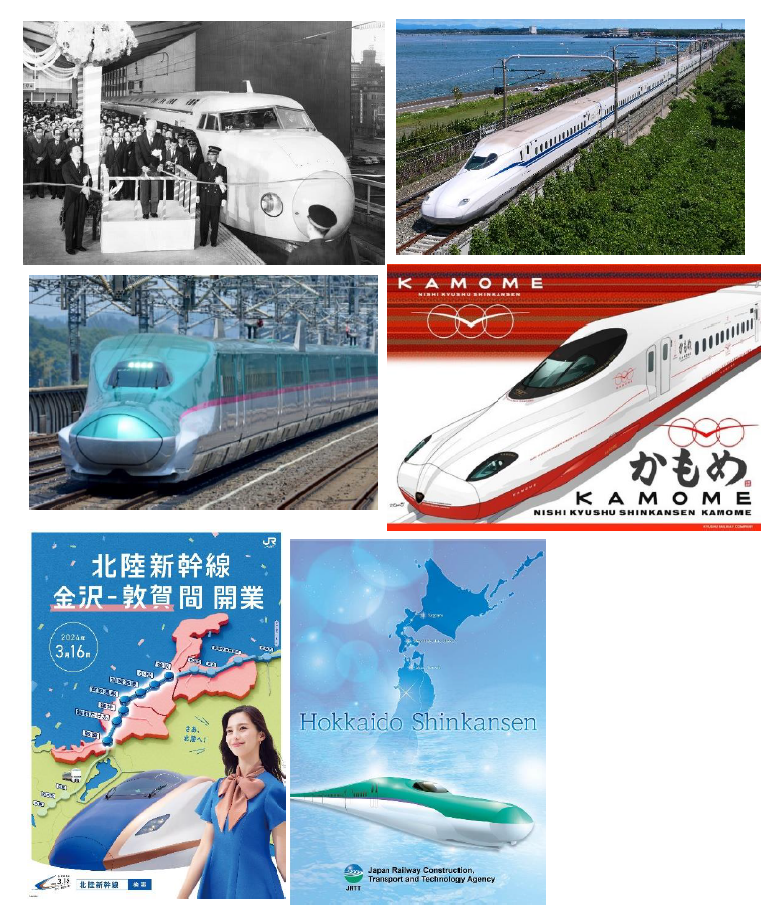
Sources :
- Asahi article about the Nishi-Kyushu Shinkansen・Article d'Asahi au sujet du Shinkansen Nishi-Kyushu : https://www.asahi.com/ajw/articles/14702391
- Japan Times article about the Hokkaido extension・Article du Japan Times au sujet de l'extension du Shinkansen Hokkaido : https://www.japantimes.co.jp/news/2023/10/07/japan/society/hokkaido-shinkansen-line-extension-delayed/
- Mainichi article about the Chuo Shinkansen・Article du Mainichi au sujet du Shinkansen Chuo : https://mainichi.jp/english/articles/20240212/p2g/00m/0sc/022000c
Explanation of images from top left to bottom right・Images, d'en haut à gauche au bas à droite :
- Ribbon cutting ceremony for the first Shinkansen in 1964・Cérémonie d'inauguration de la première ligne de Shinkansen en 1964 : https://www.nytimes.com/2014/08/29/upshot/fifty-years-ago-and-today-japan-blazes-trails-with-trains.html
- Typical Tokaido Shinkansen train today・Un train de Shinkansen Tokaido aujourd'hui : https://upload.wikimedia.org/wikipedia/commons/8/88/Series-N700S-J2.jpg
- Tohoku Shinkansen E5 series・Le Shinkansen Tohoku, série E5 : https://www.jreast.co.jp/multi/routemaps/tohokushinkansen.html
- Nishi Kyushu Shinkansen launch poster・Affiche du Shinkansen Nishi Kyushu : https://soranews24.com/2021/08/02/new-shinkansen-bullet-train-design-revealed-for-nagasaki-extension/
- Hokuriku Shinkansen extension launch poster・Affiche de l'extension du Shinkansen Hokuriku : https://www.kankokeizai.com/jr%E8%A5%BF%E6%97%A5%E6%9C%AC%E3%80%81%E5%8C%97%E9%99%B8%E6%96%B0%E5%B9%B9%E7%B7%9A%E9%87%91%E6%B2%A2%EF%BD%9E%E6%95%A6%E8%B3%80%E9%96%93%E9%96%8B%E6%A5%AD%E3%81%AB%E5%90%91%E3%81%91%E3%83%86%E3%83%AC/
- Hokkaido Shinkansen extension brochure front page・Page d'accueil de la brochure de l'extension du Shinkansen Hokkaido : https://www.jrtt.go.jp/project/asset/pdf/hokkaido/PamphletHokkaido_en.pdf

